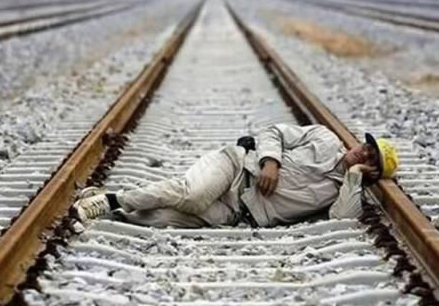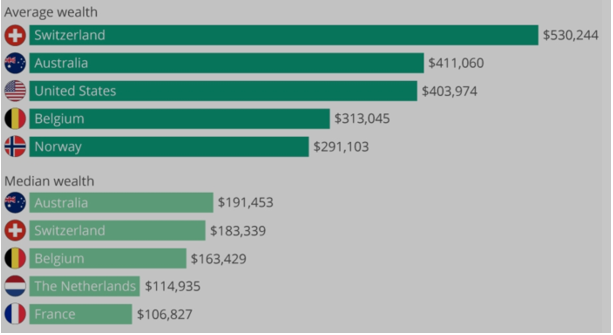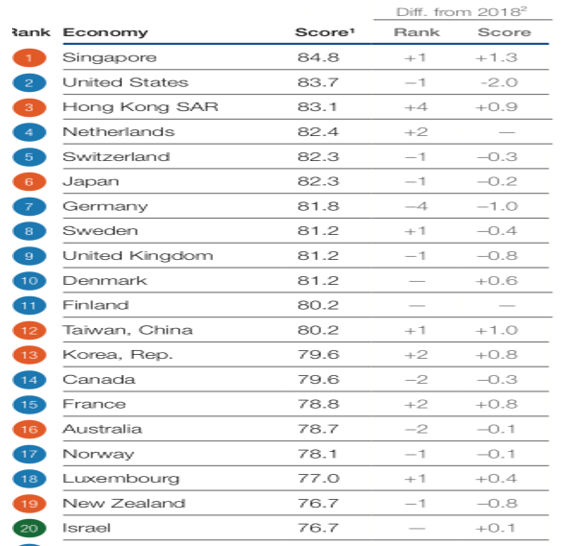
Nick Cater in The Australian rightly lampoons a Harvard study that, by polacing its focus on manufacturing, manages to rank Australia ninety-third in the world economic complexity league table. By contrast, another study, Credit Suisse’s Global Wealth Report, puts Australians second in the world in terms of average wealth and the wealthiest for median wealth. These assessments inevitably involve some exercising of problematical judgements by their authors, but that aside, wealth is not as easy to measure as it might appear.

The Credit Suisse study would be heavily coloured by the fact that most of Australians’ household wealth is locked up in the homes they own. And the value of those houses is inflated threefold more than that of comparable houses in the US or France, where planning regulations are more liberal. Take away the illusory wealth represented by regulatory-driven land scarcity (in the nation with the world’s highest per-capita land availability!) and Australian’s household wealth falls to average OECD levels.
One long-standing annual assessment of nations’ comparative performances is the Global Competitiveness Report of the World Economic Forum. Its appraisals are based on multiple factors grouped into “pillars”, the first of which is based on “security, property rights, social capital, checks and balances, transparency and ethics, public-sector performance, future orientation of government, and corporate governance”. Okay, some of the actual assessments could be coloured by prejudices but, in general, the rankings in this “pillar” seem sound, with the top performers being Finland, Singapore, New Zealand, Netherlands, Hong Kong and Switzerland.
This first “pillar” of comparisons is moderated by other criteria including infrastructure, and information and IT (Australia coming a distant 29th in both cases) macroeconomic stability (where Australia is ranked as equal first along with 33 other countries), labour market, human capital, financial system stability, meritocracy, R&D and “entrepreneurial culture”.
The overall positioning of the top 20 nations in 2019 was

That ranking would tend to confirm some intuitive thinking, all the more so when one sees the nations bringing up the rear are the failed, impoverished states of Chad, Yemen, Congo and Haiti. That said, the competitiveness indices somehow fail to comprehend the achievements of the recent success stories seen in some of the fastest growing nations: China (ranked 28), Vietnam (67) and India (68).
For Australia a sadly realistic assessment can be gleaned from the picture over time. Our halcyon days were at the beginning of the 21st century, following the micro-economic reforms and privatisations that were seen in the Hawke/Keating and Howard governments (as well as those in the states, led from Victoria by the Kennett government). In 2001, Australia ranked in the top five on the Global Competitive Index. Even before the fall of the Howard government we had been running out of steam but the apotheosis was crushingly dethroned by the excesses of the Rudd/Gillard years and has not been retrieved.
This seems unlikely to change. There is no radical reform program finding a political sponsor, no constituency for dramatic cutting of spending. All we can see is regulatory measures being intensified in energy, water, land use, mining and telecommunications.
Worse, the bigger risk is that a future ALP government with the policies similar to those Shorten took to the May election would send us on a further downward spiral.
Alan Moran of Regulation Economics is the author of Climate Change: Treaties and Policies in the Trump Era
 Sign In
Sign In 0 Items (
0 Items ( Search
Search










Interesting.
That our wealth is dependent on the housing bubble is worrying, of course.
Australia seems caught between “we don’t have enough people to maintain infrastructure for an entire continent” and “we can’t put more people on our overloaded infrastructure”. And the obvious solutions – immigrants having to go were we need them, and build the infrastructure the way they built the Snowy, seem to hard for our pollies.
Australia decided it didn’t need manufacturing and could simply rely on exporting dirt and importing people. This is the epitome of ‘dumb growth’. Economist Leith Van Onselen put it nicely:
“Adding to Australia’s malaise is its ‘dumb growth’ economic model, which relies on importing hundreds of thousands of bodies every year, alongside increasing household debt, which drives consumption and malinvestment into property and catch-up infrastructure, rather than productivity.
Perversely, adding a million extra people every 2.5 years also dilutes Australia’s mineral base – the primary source of its wealth – which then makes us poorer per capita.”
https://www.macrobusiness.com.au/2019/10/the-dumbening-of-australia/
There is a lot in this article. It does, I believe, confirm the risk of what have been minority Federal government since the end of the Howard era. Its reformist bent expired well before the era ended and has not regenerated on any sustainable basis.
The incumbent Morrison led government has some opportunity to begin the claw back on productivity and modernising de-regulation, if it can carry the senate cross benches. It will need to be able to convince them there is some electoral advantage for them, they are essentially populists. That is not to say ‘populism’ is essentially wrong etc but its often incoherent in functional policy terms, not unlike the dancing bears.
The current NSW government is belaboured for its attempt at infrastructure catch up. Fumblers but their intention is right.
The obvious looming energy shortfall continues to float in the political ether.
Population numbers are running at near random levels, not a plan in sight. Just Inte Generation Reports to pump up the Budget with Treasury orchestrating.
Education remains in the Dickensian era, so far from relevant to contemporary and likely forward needs of a competitive and relevant workforce to be nearing irrelevance for many young people. Yet out tertiary institutes chase overseas students for financial gain for the inner circle of academics. Cognitive dissonance of major proportions?
As a general community we are not helpful, joining in the confected rage or allowing the old fave national apathy to dictate our negativity. Our only reaction as was shown by the so called ‘quiet Australians’ when we may be at some personal disadvantage by a policy. Please do not mark this as wisdom, just more of the same and perfectly able to be manipulated. (No, I do not support Shorten or his unmerry band of misfits and daily give thanks for the PM being a hope for the future)
Reality is we have little sense of identity as Australians. We are a series of villages, not unlike pre-unification’ Italy, at war with each other at least at a state level, urban-regional etc level and easily distracted by trivia and the politics of opposition and disruption with a middle class 5th column busily at work in the inner cities.
Moran has touched on the statistical evidence there is much to do and the Morrison Government has a shot at doing much but needs to move beyond the rhetoric.